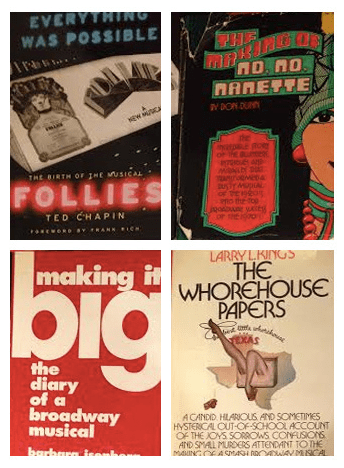Originally published on Fuck Yeah Stephen Sondheim.

The first thing you notice about Max Friedman and Charlie Rosen is how young they are. Okay, if you’re reading this on Tumblr, you might be younger than they are, but from my perspective at the ancient-by-gay-New-York-standards age of 35, it’s shocking how accomplished these two guys are before either has hit the age of 24. But it’s their Mickey and Judy “Let’s put on a show” enthusiasm combined with serious chops honed on Broadway, in cabarets, and beyond, that give us the first inkling (get it?) of what to expect from their new multimedia Sondheim revue, The Bluest Ink, debuting tomorrow night at Le Poisson Rouge.
“When I was in high school,” said Friedman, “I was obsessed with Sondheim, and I was obsessed with revues like Putting It Together and Side By Side By Sondheim and this more obscure one they did in London called Moving On. I thought there were a lot of stories you could tell using Sondheim songs.” Friedman envisioned putting these songs into a new context to tell a story they hadn’t yet been employed to tell — that of his generation of New Yorkers in their early 20s in today’s hyper-connected world.
Friedman and Rosen had already teamed up on are project, Charlie Rosen’s Broadway Big Band (in residency at 54 Below), and when Rosen put together a swing arrangement of “What More Do I Need” (from Saturday Night), Friedman knew he found the right collaborator for his Sondheim show.
Rosen approaches Sondheim’s material with a careful balance of reverence and creativity. “It requires a bit of care,” Rosen said. “Sondheim’s chords and harmonies and melodies are so beautiful and work so well together that you have to use very careful taste and judgment to not destroy what already works so well, while being fresh and imaginative with a little bit of risk-taking with some new harmony that comes out of my jazz education and they movement of modern jazz.” While the team isn’t revealing the song list before the show, they’ve hinted at a mix of favorites and lesser-known gems, with some interesting medleys and juxtapositions to bring new perspective to some of the more familiar tunes.
They’re joined by six musicians and a cast of four young performers “having their Beth/Mary/Frank/Charley moment of opening all the right doors,” according to Friedman, who hopes this show will help expose them to a broader audience as well.
Besides the youthful aspect of this production, the other element tying it to this moment in history is the extensive use of multimedia, by animator Ilana Schwartz. “The multimedia is something I was always hoping to bring to the show,” said Friedman. “The whole idea of ‘The Bluest Ink’ is the difference between writing and living — ‘the bluest ink isn’t really sky.’ A lot of the show takes place with the cast scrawling into notepads as they sing, and what you’ll see in the projections is their doodles — their thoughts really coming to life.”
Although The Bluest Ink’s stand at Le Poisson Rouge is a one night only production, the team hopes the show will have further life in a theatrical setting. But for now, tomorrow night is your only chance to see this jazzy, youthful new take on some of your favorite Sondheim songs — and some you may not know so well — so if you’re in New York, there’s only one place to be tomorrow night at 10.













